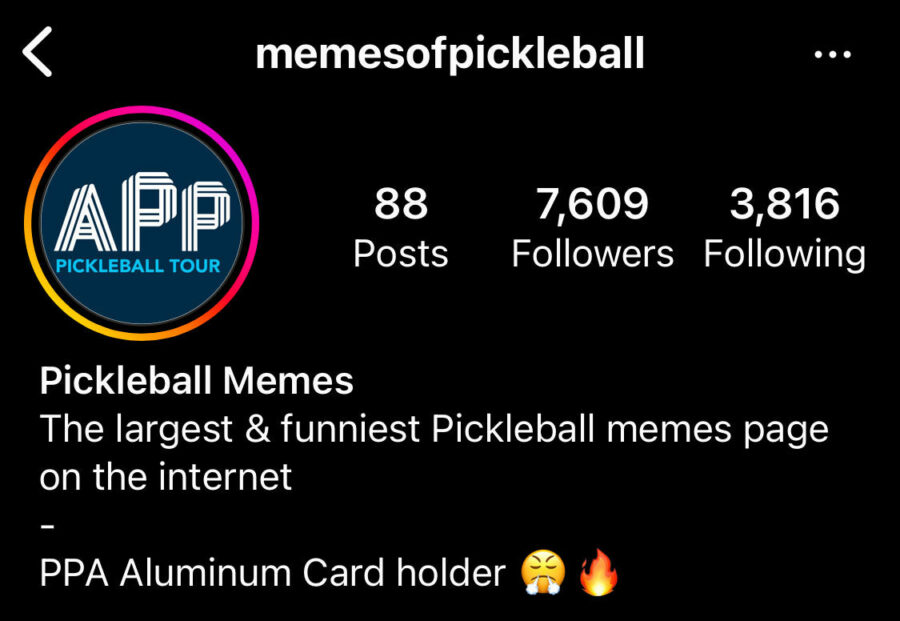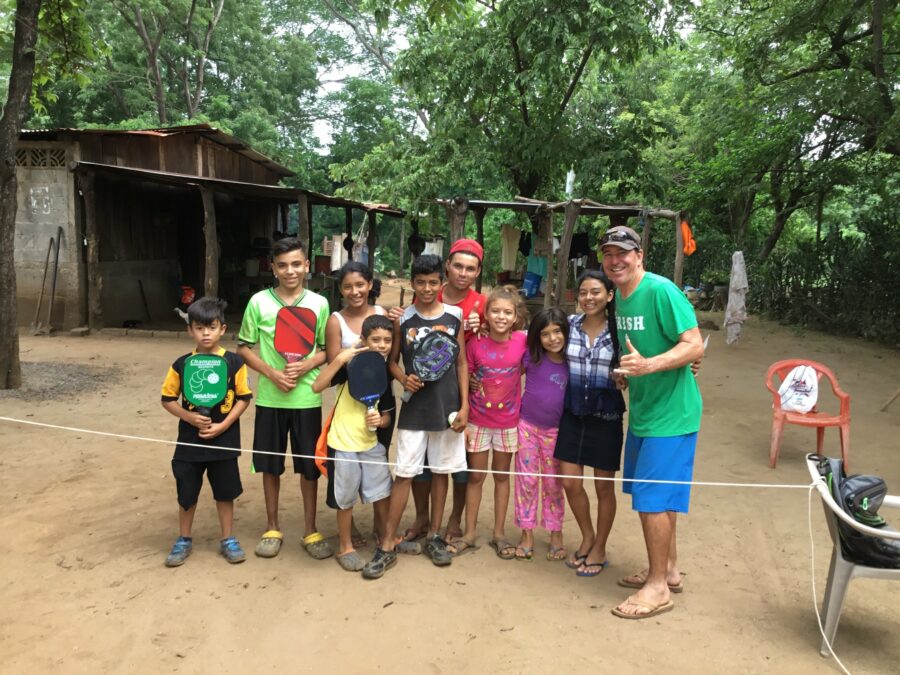I had someone recently ask me – what is the toughest thing about transitioning from tennis to pickleball? I don’t think there is any one thing that is the toughest, so I will just give you my experiences and make some suggestions. I found the transition pretty easy, but also found that learning the best strategy took time. Remember, these are just my recollections.
The Court
A pickleball court is smaller than a tennis court – thankfully. A tennis court is 78 feet long, 27 feet wide for singles matches and 36 feet for doubles, whereas a pickleball court is 20 feet wide and 44 feet long. Is that a problem? Not really, although when I first started playing on tennis courts that had been striped for pickleball, I would occasionally go to the tennis back line before serving. That gave everyone a good laugh.
A pickleball court also has a 7-foot zone behind the net called the “No Volley Zone (NVC).” It is sometimes called the “kitchen.” I have not found any definitive reason why it is called the kitchen, other than some people claim that it is a term borrowed from shuffleboard (something I now nothing about). I always thought that it came from, “if you can’t stand the heat, get out of the kitchen.” That doesn’t make very much sense either, I guess.
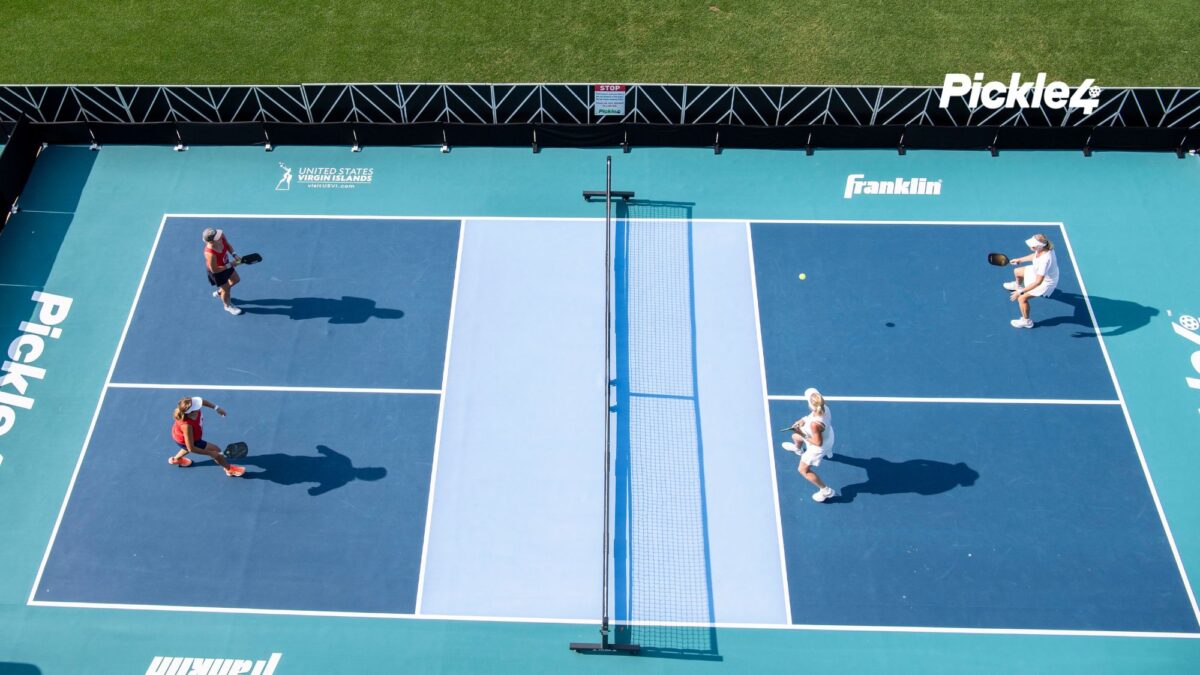
Anyway, you cannot hit a volley (taking a ball out of the air) when you are in the kitchen or just touching the kitchen line. You can, however, step into the kitchen to hit a ball that has bounced. Also, if you hit a volley and your momentum carries you into the kitchen, you lose the point. As I learned the hard way, you cannot serve and volley in pickleball as you can in tennis. If you could, games would be over pretty fast. It is a hard habit to break.
Pickleball Strokes vs. Tennis Strokes
Ground Strokes
When I played tennis, I used as much topspin as I could. My favorite shots were the “dipper,” a hard ground stoke that (hopefully) dove just as it passed the net. My second favorite shot was a topspin lob. There is nothing more satisfying than seeing your opponent’s shoulders sag when they realize that they can’t track the lob down and, even if they could, it would spin away from them when they got to it.
In order to generate pace and spin, I took my racquet WAY back, hit from low to high and followed through over my left shoulder. Well, that does not work in pickleball. It took me a long, long time to realize that.
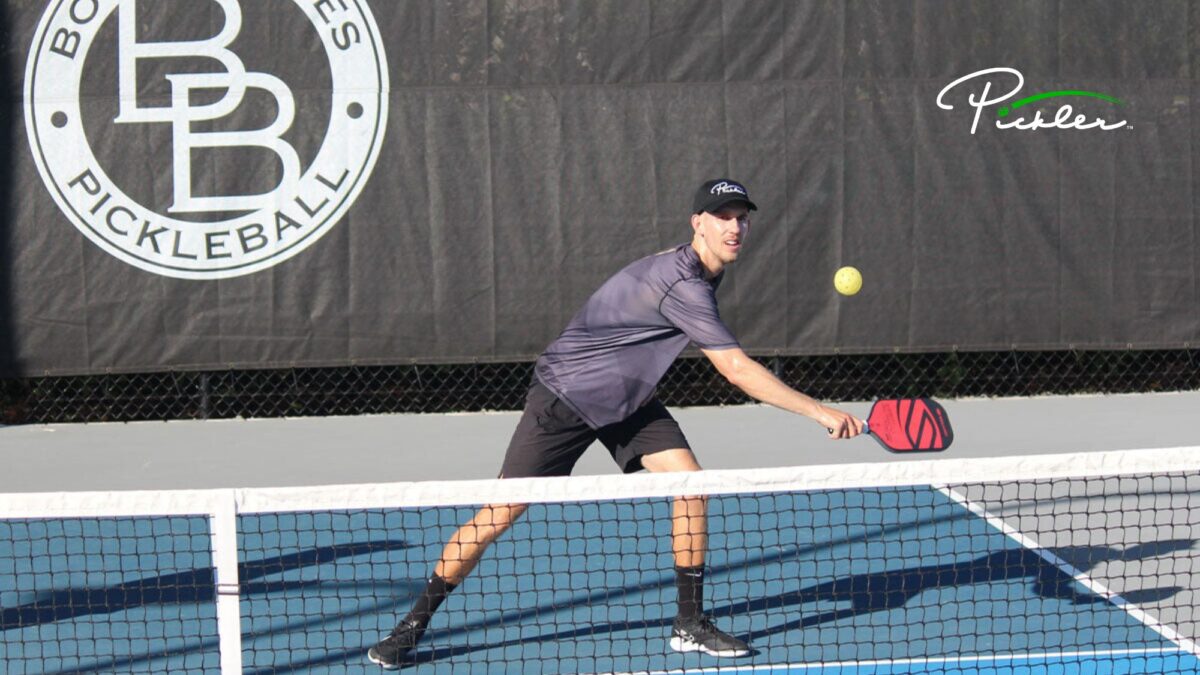
Pickleball paddles don’t have strings, therefore generating topspin is difficult. I can do it if I am going cross court, but that is more side spin than actual topspin. If you hit the ball just right, however, you can generate a little bit of topspin. Taking your paddle way back is counterproductive as well. You want shorter strokes with less follow through. You may find the ball coming back at you in a hurry and you have to be ready for it.
Having said all that, you can, in fact, generate topspin in pickleball, but the ball is not going to leap off the court as it does in tennis. Topspin is more for getting the ball deep and keeping it in the court. Also, if you get a ball high enough, you can come over the top of the ball and spin it. But pickleball topspin is nothing like tennis spin.
Underspin
I never hit much underspin when I played tennis, except for approach shots down the line. In pickleball, however, I hit a lot of underspin from both sides. The best players I have seen tend to use underspin when hitting their backhands. I don’t know why, but underspin from the backhand side seems to be easier to hit.
The beauty of underspin is that it keeps the ball low, making your opponent have to hit up on it. The odds of you getting to the net and putting away that shot is much better when that happens.
Add some sidespin to your underspin shot and you can make it really difficult for your opponent. I play against a guy who can spin the ball so much that it will make an almost 90 degree turn when it lands. It is, unfortunately, a low percentage shot.
“Creaming” the Ball
Smashing the ball, especially from the baseline, is not a good strategy. Yes, you may get lucky and pass your opponent, but more times than not your opponent is going to take that ball and either hit it back so you soft and deep, or just block it aside for a winner.
Creaming the ball from behind the kitchen does not work very often either. Odds are your ball will sail long or (happened to me a lot) you will hit the top of the net.
Pickleball is more of a soft game than a hard game.
The Serve
Sorry – no American Twist serve in tennis, no pronation, nothing above the waist. The serve in pickleball has two musts – you must use an underhand stroke and the ball must be struck below waist level. Waist level is now defined as your belly button or navel to be more accurate.
A third rule of serving that paddle head must be below the server’s wrist when it strikes the ball. The highest point of the paddle head cannot be above the highest part of the wrist (where the wrist joint bends). I have a serve that borderlines on illegal. I start below my waist and hit the ball below my waist, but my paddle face is just about coming across the top of the ball when I hit it. Is the paddle below my wrist? I don’t know – I’ll keep using it until I am challenged on it.
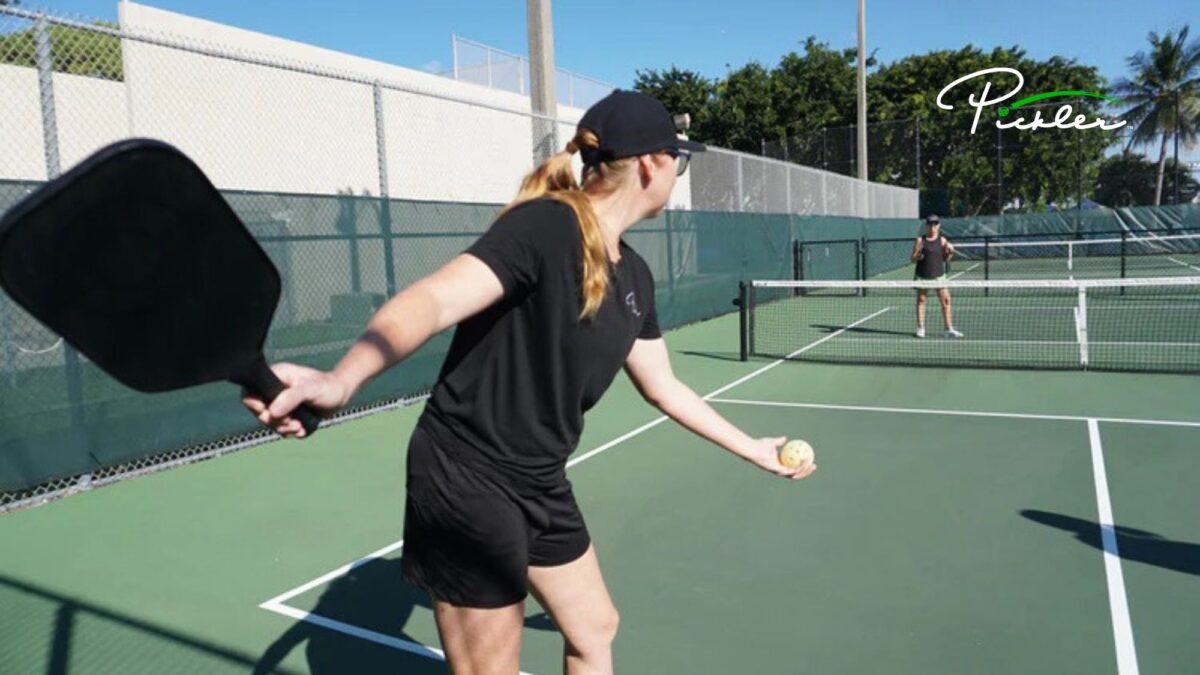
I know a few players who want to hit a power serve and hit it almost side armed. If you think the serve is being hit above the waist, and you are in a tournament, ask the referee to observe the serve.
It took me a long time to learn the best serve technique – deep into the court and soft. Make your opponents provide their own power.
Lobs
Lobs can be effective in pickleball. However, unlike lobs in tennis, you don’t want to hit the lob so high that your opponent can track it down. You want to hit is just high enough to get it past them. Easier said than done. There are some good techniques to lobbing in pickleball, however. Assume you are playing a right-handed opponent. If you try to lob over their right shoulder, you will probably wind up eating the ball. If, however, you lob softly over their left shoulder, there is not a lot they can do with it.
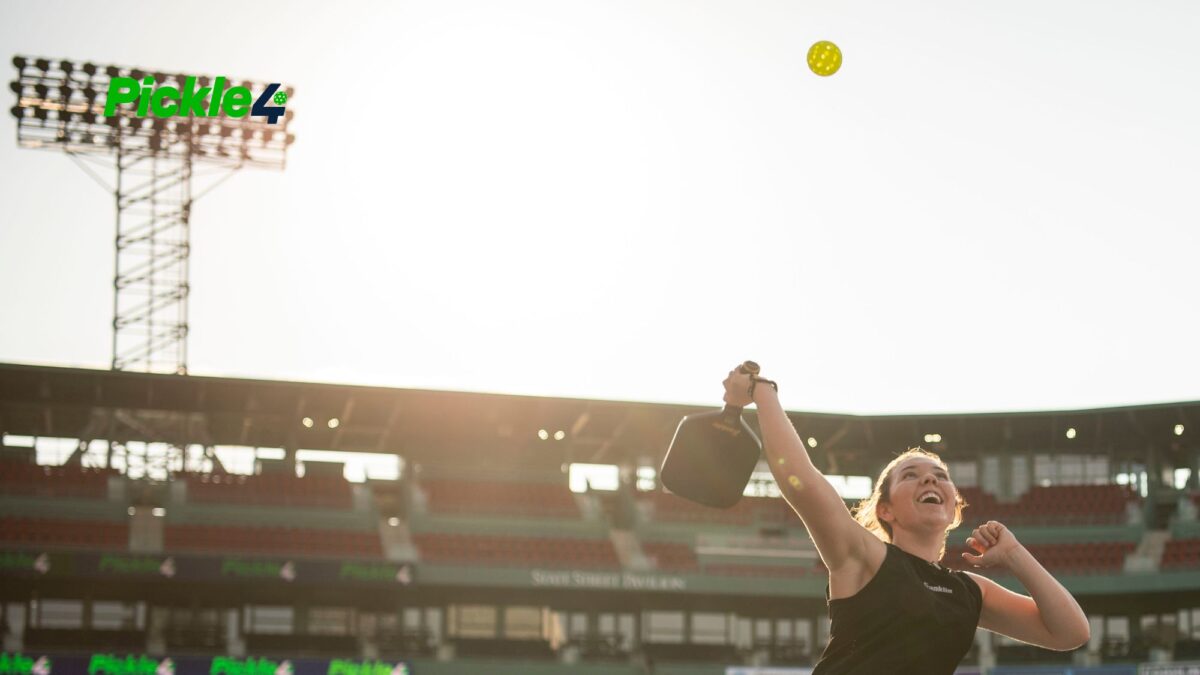
Foot Movement
Unless you are playing singles, you are not going to be moving big distances in pickleball. Instead you will be moving shorter distances either to be in sync with your partner or to adjust your position near the kitchen. Most of the time you want to use a side shuffle. This is when you jump sideways and land with both feet in the ready position, facing the net, before moving in your desired direction. Crossover steps should be reserved to recover or to get to a ball that is simply out of reach.
Scissors Kick
Finally – something the same! When you have an overhead smash in either pickleball or tennis, you want to use a scissors kick. Push off your back foot and follow through onto your front foot.
The Dink
The dink is a shot hit with the intention of landing the ball at your opponent’s feet or in your opponent’s kitchen. It is probably the most important shot in pickleball. Pull up any videos of championship matches and you will see a lot of dinking, even from big, powerful players.
I will admit that I refused to dink for the first year that I played pickleball. I did okay, but only because I was playing against other former tennis players. We all wanted to kill the ball. Now I know better.

Two-handed Backhand
I used a two-hander in tennis. I don’t in pickleball. The handle is too short for my liking. UPDATE: Sine my shoulder surgery, I have begun using a two-handed backhand. Most paddles now come with elongated handles, making the two-hander easier to hit. I can’t I still use a one-hander on some service returns (to hit under-spin) and when close at the net, but the two-hander is my normal backhand now.
Court Surface
Pickleball courts are hard courts, not green or red clay. Why does that matter if you are transitioning? I played tennis mostly on green clay or, on occasion, red clay. I used to slide a lot. I had been playing pickleball about one year when I tried to slide and tour my ACL. Forget about sliding in pickleball!
The Equipment
There is not much to say. You have a paddle, not a racquet. You have a wiffle ball, the kind with holes all around it, not a tennis ball. The court is smaller and the net a bit shorter in the middle. That’s about it.
The Pace of the Game
Tennis is a fast game. The ball comes at you at a high rate of speed and you have to react quickly. Not so with pickleball. Unless you are at the net, the ball is not going to come at you at a high rate of speed. The short, stringless paddle and the wiffle ball make certain of that.
So, you don’t have to rush the net. Let’s assume that you receive a hard serve and you float it back deep. You can be at the net before your opponent hits it back. If you smash the serve back, you may not be able to get to the net.
It took me a couple of years to realize that I had to slow down my game.
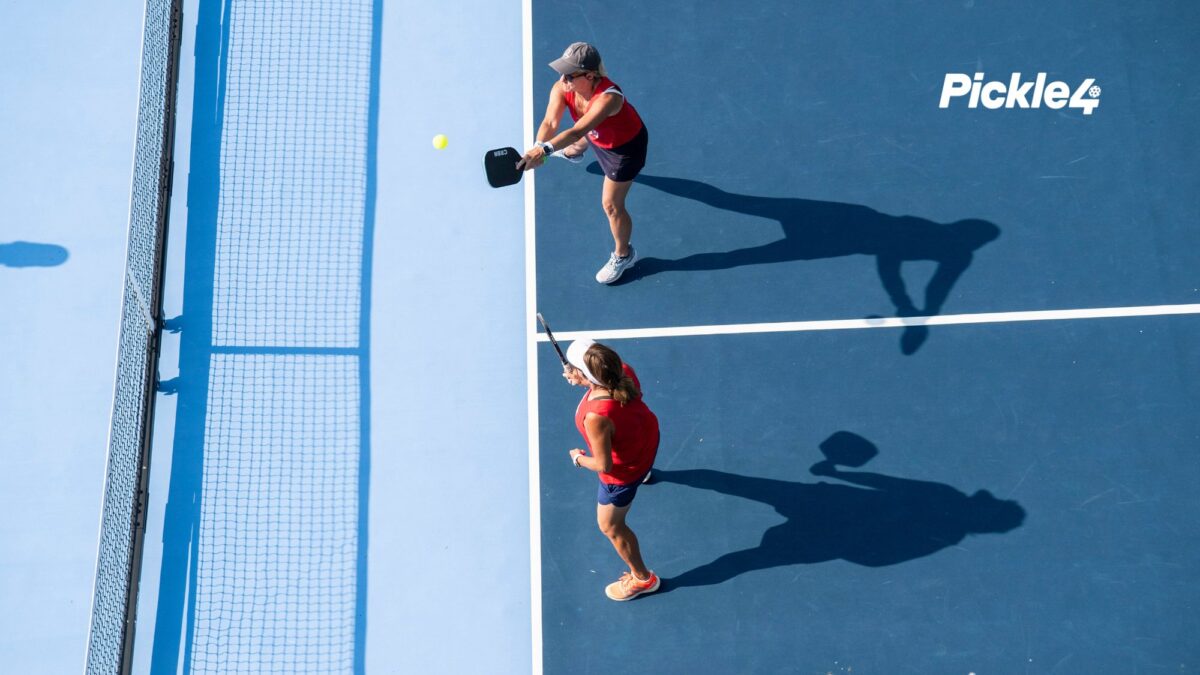
When you are at the net, you may get into a dinking game. You have to be patient. If you try to take a ball that is below the net and hit a winner, you are trying to make a low percentage shot. Wait until you get a high ball that you can put away.
I always joke that “patience is not my middle name.” I’m much better than I once was, but I still succumb to the temptation to hit low percentage winners. It is the tennis player in me.
Other Differences
The rules are similar to those in tennis, other than you get one serve, not two. There are a few others, but knowing them will not affect your ability to transfer sports. That is a topic for another time.
Update
I received a comment from Holly, who said that “the hardest changes from tennis for me were staying square to the net; doing a flat punch volley when square; the quick snap shot down into court; and square to court for overheads. Her comment brings up an important point – hitting down at an opponents feet is a very good tactic. Hitting at an opponent is not as good as it is in tennis. If your opponent has fast hands, they may be able to get the ball right back at you.


